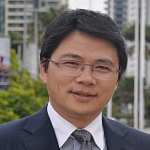Smart Biomaterials for Tissue Regeneration
A special issue of Applied Sciences (ISSN 2076-3417). This special issue belongs to the section "Materials Science and Engineering".
Deadline for manuscript submissions: closed (30 November 2020) | Viewed by 4398
Special Issue Editor
Interests: biomaterials; stem cells; tissue engineering; regenerative medicine; inflammation and tissue repair and regeneration; regenerative dentistry; bone and cartilage regeneration
Special Issues, Collections and Topics in MDPI journals
Special Issue Information
Dear Colleagues,
It is our pleasure to announce that Applied Sciences invites submissions to this Special Issue on Smart Biomaterials for Tissue Regeneration.
Regenerative medicine aims to develop potential clinical interventions to restore the tissue function and tissue integrity for damaged or lost tissues caused by injuries, diseases, congenital defects, etc. However, tranditional development of biomaterials for tissue regeneration mostly emphasizes the regulation of stem cell function, delivery of cytokines, and support of tissue structures. Less attention is paid on the individual miroenvironment of the damaged tissues, which is significantly different between patients and influenced substantially by the health status of the patient, such as patient’s age, systematic disorders, immunocompromised condition, etc. Therefore, the next generation of smart biomaterials for tissue regeneration should not only satisfy biocompatibility, minimal inflammatory reactivity, and easy integration with the host tissue, but should also be able to sense and respond to the diverse microenvironment when implanted into different patients’ defective sites to induce desired tissue responses, leading to tissue regeneration.
In this Special Issue, we encourage submissions of original research works and reviews focused on smart biomaterials development for tissue regeneration, particularly on designing environmental response biomaterials.
Prof. Dr. Yin Xiao
Guest Editor
Manuscript Submission Information
Manuscripts should be submitted online at www.mdpi.com by registering and logging in to this website. Once you are registered, click here to go to the submission form. Manuscripts can be submitted until the deadline. All submissions that pass pre-check are peer-reviewed. Accepted papers will be published continuously in the journal (as soon as accepted) and will be listed together on the special issue website. Research articles, review articles as well as short communications are invited. For planned papers, a title and short abstract (about 100 words) can be sent to the Editorial Office for announcement on this website.
Submitted manuscripts should not have been published previously, nor be under consideration for publication elsewhere (except conference proceedings papers). All manuscripts are thoroughly refereed through a single-blind peer-review process. A guide for authors and other relevant information for submission of manuscripts is available on the Instructions for Authors page. Applied Sciences is an international peer-reviewed open access semimonthly journal published by MDPI.
Please visit the Instructions for Authors page before submitting a manuscript. The Article Processing Charge (APC) for publication in this open access journal is 2400 CHF (Swiss Francs). Submitted papers should be well formatted and use good English. Authors may use MDPI's English editing service prior to publication or during author revisions.
Keywords
- Tissue regeneration
- Microenvironment
- Cell–material interactions
- Smart biomaterials
- Composites
- Environmental response materials
- Inflammation
- Tissue fomation





